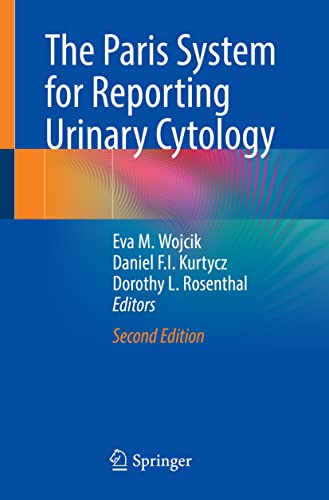

Most ebook files are in PDF format, so you can easily read them using various software such as Foxit Reader or directly on the Google Chrome browser.
Some ebook files are released by publishers in other formats such as .awz, .mobi, .epub, .fb2, etc. You may need to install specific software to read these formats on mobile/PC, such as Calibre.
Please read the tutorial at this link: https://ebookbell.com/faq
We offer FREE conversion to the popular formats you request; however, this may take some time. Therefore, right after payment, please email us, and we will try to provide the service as quickly as possible.
For some exceptional file formats or broken links (if any), please refrain from opening any disputes. Instead, email us first, and we will try to assist within a maximum of 6 hours.
EbookBell Team

4.8
24 reviewsThe first edition ofThe Paris System for Reporting Urinary Cytologyintroduced a completely new paradigm for detecting bladder cancer by urine cytology. This system concentrated on defining morphological characteristics of the most clinically significant form of bladder cancer, High Grade Urothelial Carcinoma. This new approach has been widely accepted throughout the world, and has become part of the daily practice of cytology. Considering that the first edition of The Paris System (TPS) introduced a new model of urinary cytodiagnosis, verification and expansion of initial material and data were anticipated. Based on evolving knowledge and readership requests, the group of highly experienced authors have created a new edition of TPS. This second edition includes areas and issues not originally covered. A new chapter on urine cytology of the upper tract, a rarely addressed topic, has been introduced. Furthermore, the issue of cellular degeneration is discussed in the criteria of all diagnostic categories. Examples of standardized reports are included in each chapter. Most importantly, a separate chapter presents data defining the risk of malignancy (ROM) for each diagnostic category to inform clinical management. New high quality images augment those of the first edition to better illustrate diagnostic clues and potential pitfalls. In addition to chapters on diagnostic criteria, current concepts of pathogenesis of bladder cancer, specimen adequacy and preparation, and ancillary tests are covered in separate chapters. A bonus to the volume is a comprehensive history of urine as the earliest diagnostic sample of human disease, richly illustrated with artworks from major museums. Written by internationally recognized authorities, this comprehensive and evidence-based guide to urine cytology is supported by the newest data confirming the original concept and significance of diagnostic criteria defining High Grade Urothelial Carcinoma. TPS is an essential tool for anyone who is practicing urinary cytology, including cytotechnologists, pathologists-in-training and practicing pathologists. This book should find a place in every cytology laboratory throughout the world. The Concept has been endorsed by the American Society of Cytopathology, and the International Academy of Cytology.